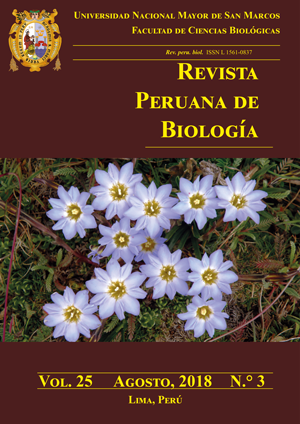Beyond specimens: linking biological collections, functional ecology and biodiversity conservation
DOI:
https://doi.org/10.15381/rpb.v25i3.14246Keywords:
biodiversity, functional traits, ecological responses, ecosystem functioning, natural history museums.Abstract
Several anthropogenic pressures are threatening biodiversity and may increase in the next years, altering ecological processes and ecosystem services. Biological collections offer a rich source of information to develop studies of functional ecology and biodiversity conservation. Key information related to morphology, physiology and life history could be obtained through functional traits provided by specimens in biological collections. Additionally, museum collections present a great potential for document changes of habitat disturbance, using response/effect framework, functional diversity measures, and fluctuating asymmetry approaches. Despite limitations of specimens in data such as abundance, imprecisions in specimen´s georeferencing, errors in taxonomic identification and the poor preservation state of some specimens, biological collections contain vast data banks, which could be useful in the contribution of key information for land use management and conservation planning.Downloads
Downloads
Published
Issue
Section
License
Copyright (c) 2018 Dennis Castillo-Figueroa

This work is licensed under a Creative Commons Attribution-NonCommercial-ShareAlike 4.0 International License.
AUTHORS RETAIN THEIR RIGHTS:
a. Authors retain their trade mark rights and patent, and also on any process or procedure described in the article.
b. Authors retain their right to share, copy, distribute, perform and publicly communicate their article (eg, to place their article in an institutional repository or publish it in a book), with an acknowledgment of its initial publication in the Revista Peruana de Biologia.
c. Authors retain theirs right to make a subsequent publication of their work, to use the article or any part thereof (eg a compilation of his papers, lecture notes, thesis, or a book), always indicating its initial publication in the Revista Peruana de Biologia (the originator of the work, journal, volume, number and date).


















